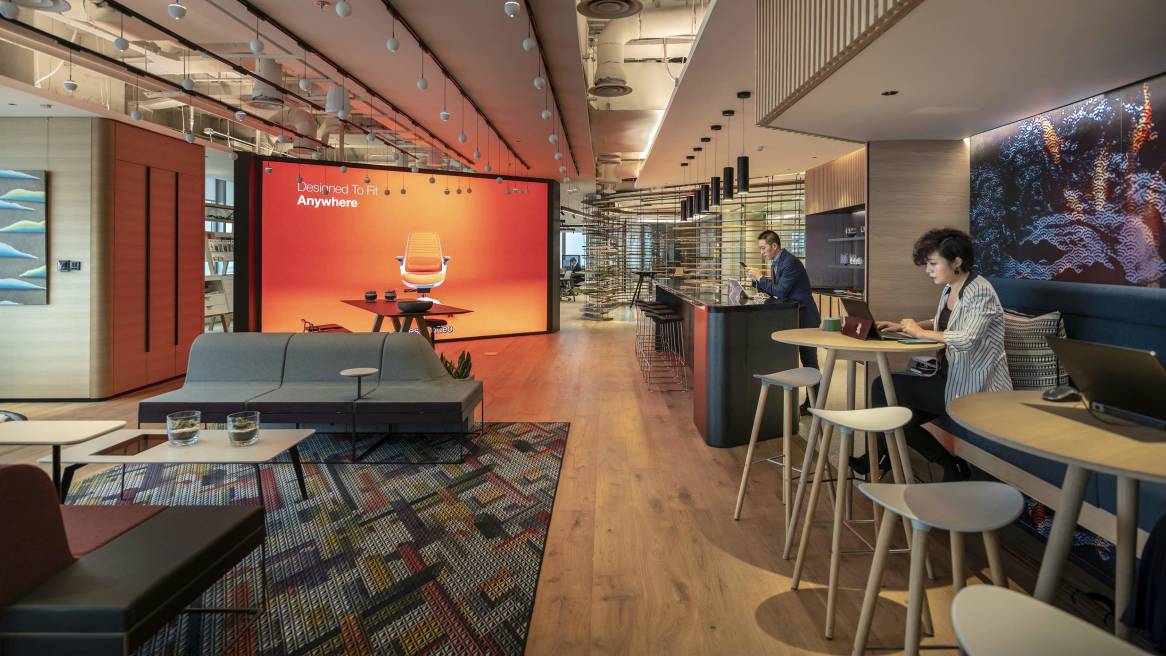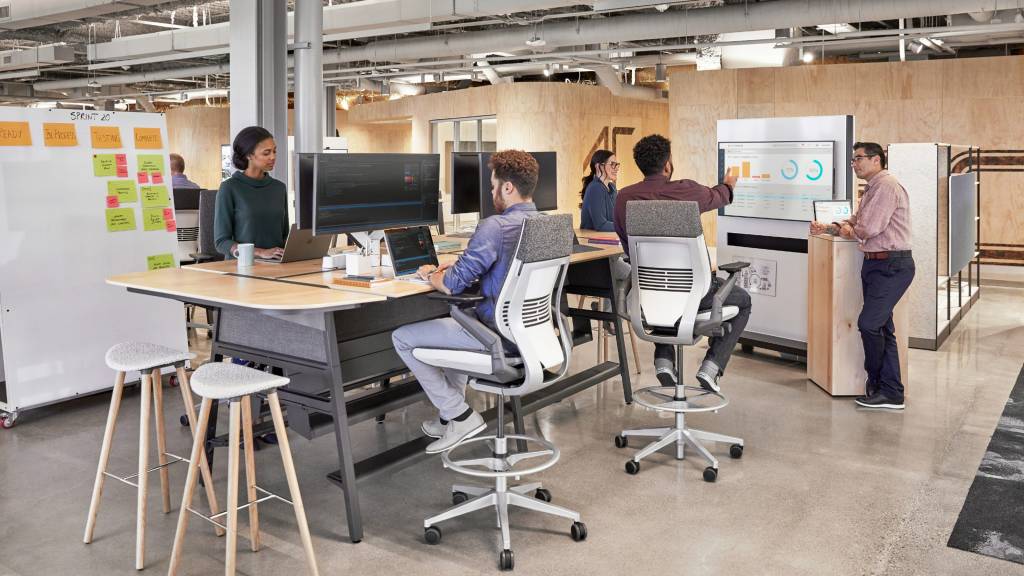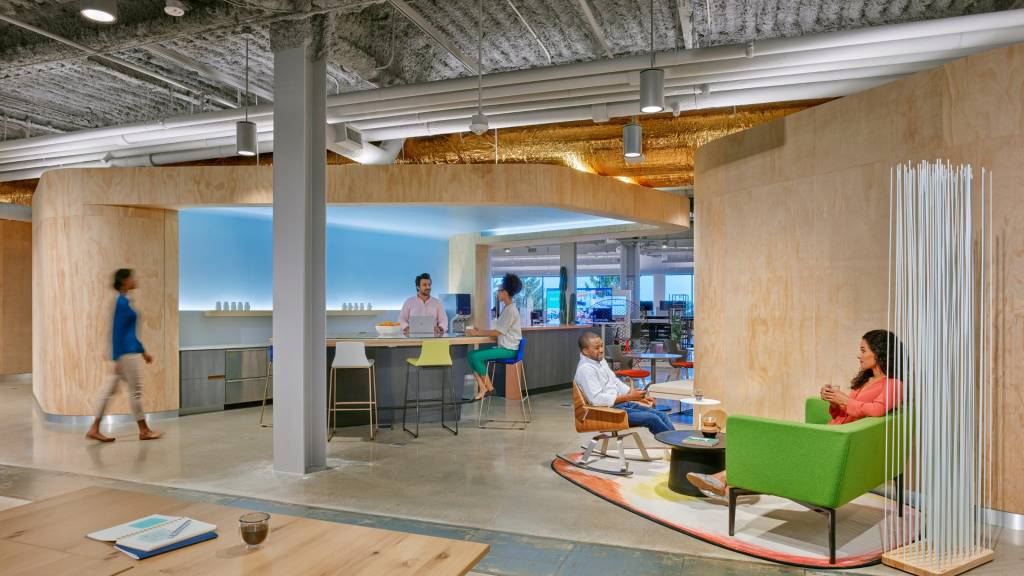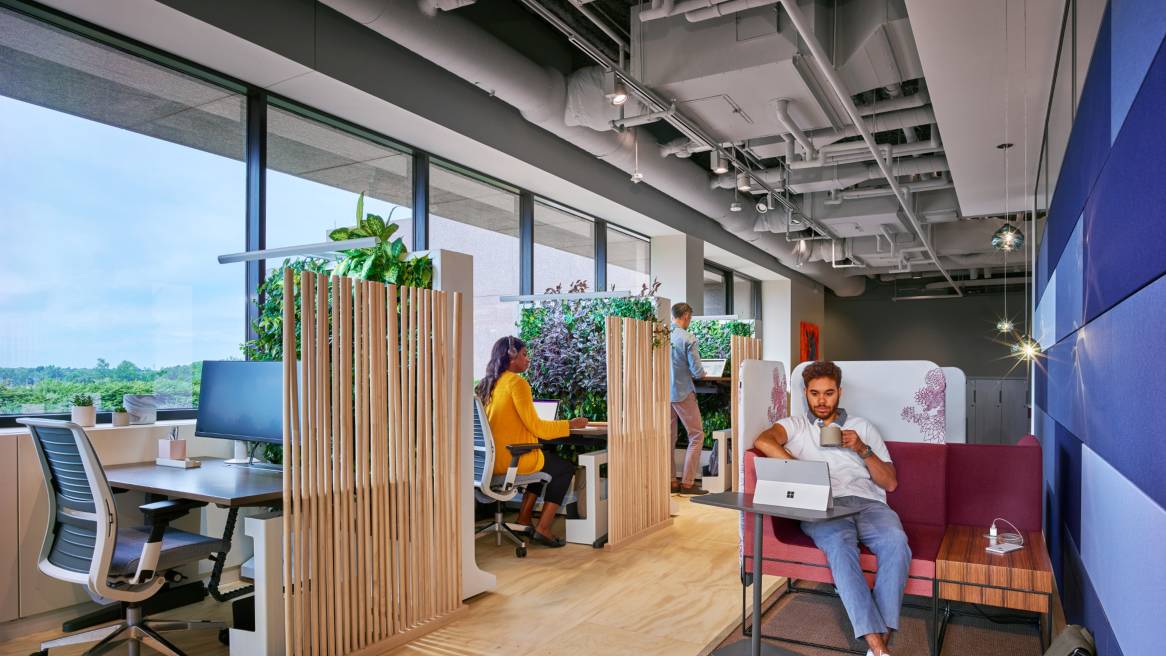Wellbeing Standards Measure How Space Impacts People
Measurements identify specific elements that ensure the workplace enhances people’s wellbeing.
Merriam-Webster defines wellbeing as “the state of being happy, healthy or prosperous.” No longer considered a soft business issue, new organizations are identifying measurable ways to credibly ensure the workplace enhances people’s wellbeing. And, as the body of research grows to show a connection between wellbeing, engagement and the bottom line, companies are eager to benefit from these kinds of partnerships.
Why wellbeing?
Steelcase researchers have been studying wellbeing for decades and there are lots of reasons why. Spaces that improve how people feel, think and move help attract and retain employees, help organizations act as good community citizens, and have been shown to improve performance and health outcomes.
“When you think about all the things that happen outside of work, the workplace is where you should feel supported mentally, physically and emotionally,” says Dustin Heiler, Steelcase global sustainability consultant.
Recently, two Steelcase spaces received recognition for meeting wellbeing standards. These standards add to a global benchmark for wellbeing. They contribute to a body of research from which other people can benefit.

The new Steelcase WorkLife Center in Shanghai received its LEED Gold and WELL Silver certifications. LEED has been around since the late 1990s and is well-known for measuring the energy and environmental impacts of buildings. WELL is much newer — launched in 2014, it is a performance-based certification system that focuses exclusively on occupant health through more than 100 research-based strategies. To date, WELL has been adopted for over 500 million square feet of projects in 58 countries.
“WELL is driving a second wave of sustainability, one that reframes sustainability through the lens of human health as opposed to planetary health,” said International WELL Building Institute (IWBI) President Rachel Gutter. “Through pathways for portfolio-wide adoption and linking WELL features with the UN SDGs (United Nations Sustainable Development Goals), WELL offers clearly defined requirements to meet health and wellbeing intents, which can help companies demonstrate that they are meeting environmental, social and governance metrics that they have defined for themselves, or they can use WELL to define the metrics they want to track and achieve.”
Fitwel, which is operated by the Center for Active Design, was created through research conducted by the U.S. Center for Disease Control and Prevention, and the General Services Administration. This certification system launched in 2017. Fitwel measures spaces using optional credits and incentivizes the highest-impact criteria based on science. The new Steelcase IT space which occupies the entire fourth floor of the Global Business Center in Grand Rapids, Michigan was recently awarded Fitwel certification.
“For some, achieving a Fitwel rating is a way to showcase and celebrate all of the healthy impacts a building or community is already achieving for its occupants,” says Zachary Flora, senior associate, Center for Active Design. “In other cases, it is a way to showcase changes that were made to improve the health impacts in a space. Steelcase was an early adopter of Fitwel, successfully implementing Fitwel’s evidence-based strategies to enhance health and wellbeing.”
Real-World Impact

The Fitwel standards consider a broad range of factors that contribute to an employee’s wellbeing. Some examples from the IT space:
- A healing garden or therapeutic landscape inside and outside
- A private quiet room
- Active workstations available
- A variety of postures that help encourage movement and flexibility in the space
- An outside view from the majority of workspaces
- Natural daylight even in conference rooms
- Break areas that accommodate lunch-time activity

Other campus amenities are important as well, such as a water bottle filling station, an exercise facility and a walking trail around campus.
The Steelcase WorkLife Center in Shanghai included a number of features that contributed to its WELL certification, such as;
- Acoustic panels in meeting rooms and HVAC system ducts to reduce noise
- Daylight Control System works alongside sensors to maximize the energy efficiency of 76% of the lighting
- WorkCafé and a food and beverage area offer only low-sugar food and drinks to promote healthy eating
- Real-time air quality monitoring system publicly displays indoor air quality index
- A ceiling air filtration system reduces harmful particles in the air
“Wellbeing is part of what we think about every day. Having a certification is a means of demonstrating that we don’t just talk about it — we walk the talk,” says Heiler. He continues that there’s always work to be done. Wellbeing isn’t a destination, it’s a journey.


